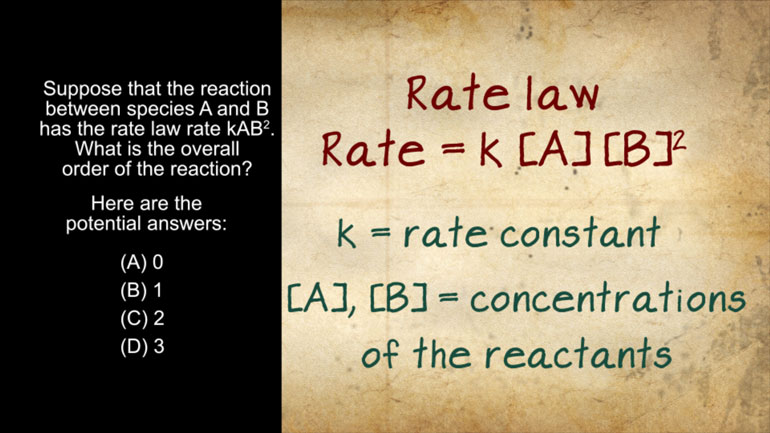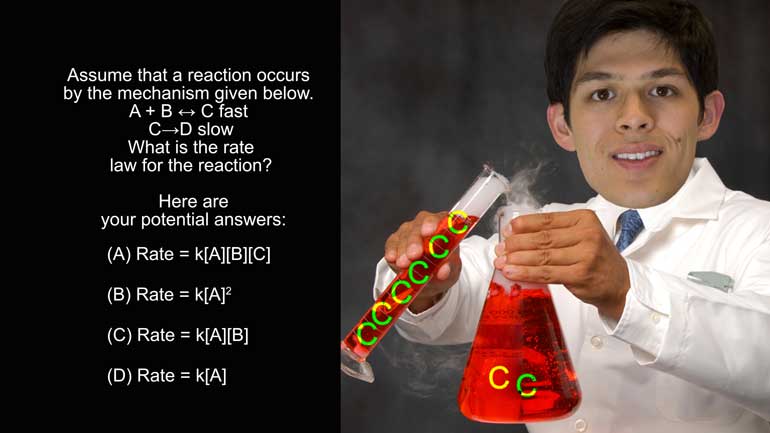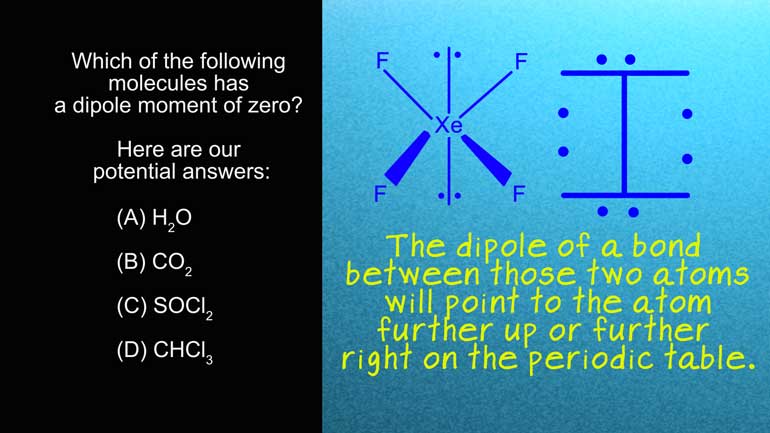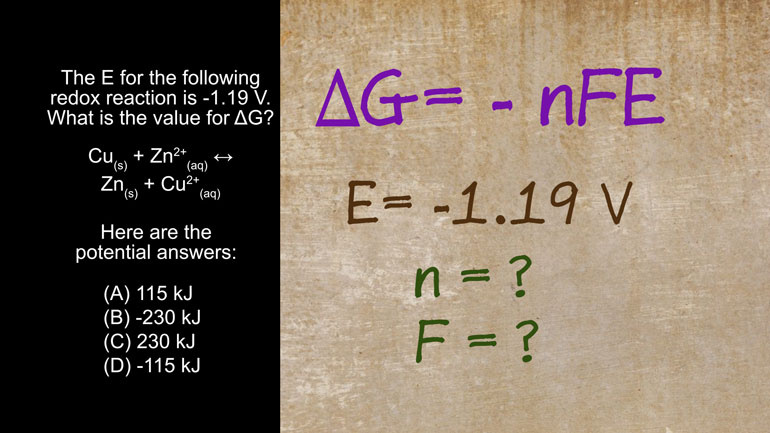ShmoopTube
Where Monty Python meets your 10th grade teacher.
Search Thousands of Shmoop Videos
AP Chemistry 1.5 Structure and Arrangement of Atoms 306 Views
Share It!
Description:
AP Chemistry: Structure of Atoms Drill 1, Problem 5. What is the hybridization of the carbon atom in the Lewis structure?
Transcript
- 00:03
Here's your shmoop du jour, brought to you by Carbon Atoms. By far the easiest atoms to copy.
- 00:13
What is the hybridization of the carbon atom in the Lewis structure?
- 00:19
And here are your potential answers...
- 00:26
OK, so the key to answering this question is to understand what hybridization is.
- 00:32
You've probably heard of hybrid cars...or even dog hybrids, like a labradoodle.
Full Transcript
- 00:37
They're super energy-efficient.
- 00:40
The concept of hybridization derives from mixing the
- 00:43
originals of something into a new mix, or hybrid.
- 00:47
In chemistry, hybridization refers to the mixing of atomic orbitals.
- 00:56
Just as there's a path we can follow to define the orbit of a planet around the sun, there's
- 01:01
also a path we can follow to define the way an electron orbits the nucleus of an atom...also
- 01:06
called an atomic orbital.
- 01:08
Hybridization in chemistry refers to the mixing of atomic orbitals into hybrid orbitals which
- 01:14
allow electrons to form chemical bonds.
- 01:17
In fact, if atoms didn't "hybridize", some of these chemical bonds couldn't form because
- 01:21
they wouldn't have the right shape or structure.
- 01:24
Here, hybridization allows the Carbon to single bond to two chlorine atoms and double bond
- 01:30
to the single oxygen atom. Oooh... edgy.
- 01:34
Now onto the REAL question. How do we figure out what the hybridization of the carbon atom is?
- 01:40
When determining hybridization, we can just count the number of other atoms that the atom
- 01:44
in question is connected to.
- 01:46
Carbon is connected to two chlorine atoms, and one oxygen atom.
- 01:51
It doesn't matter that carbon is double-bound to oxygen; it is still only bound to three atoms.
- 01:56
Three atoms means three hybridized orbitals.
- 02:00
But wait, our answer choices aren't just numbers... in chemistry notation, we can add the exponents
- 02:07
in s and p to find the number of hybridized orbitals it represents.
- 02:12
Looking at answer C, we have the exponent in s...1 plus the exponent in p... 2. 1 plus
- 02:19
2 is... give us a second... oh, right. 3.
- 02:22
So our answer is C.
- 02:24
As in "carbonite."
Up Next
AP Chemistry 1.3 Chemical Reaction Rates. What is the overall order of the reaction?
Related Videos
AP Chemistry 1.4 Chemical Reaction Rates. What are the correct units for a second order rate constant?
AP Chemistry 1.5 Chemical Reaction Rates. What is the rate law for the reaction?
AP Chemistry 3.2 Laws of Thermodynamics. What is the value for ΔG?




